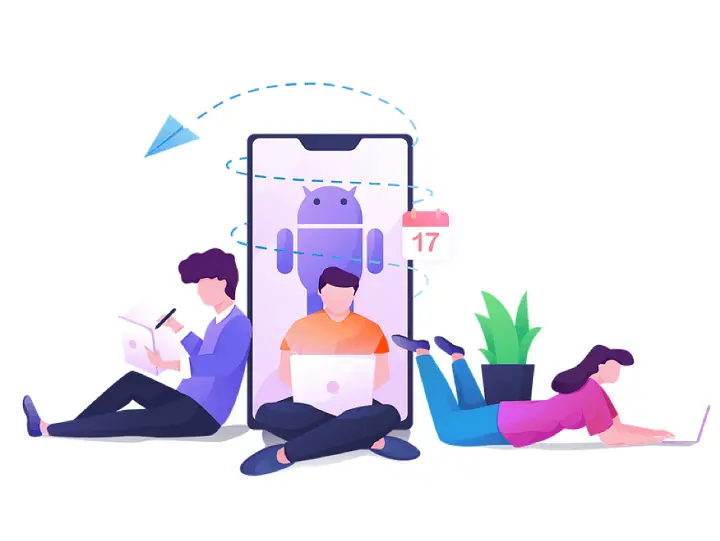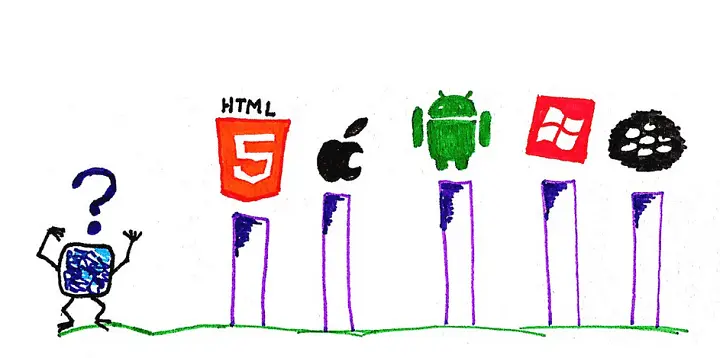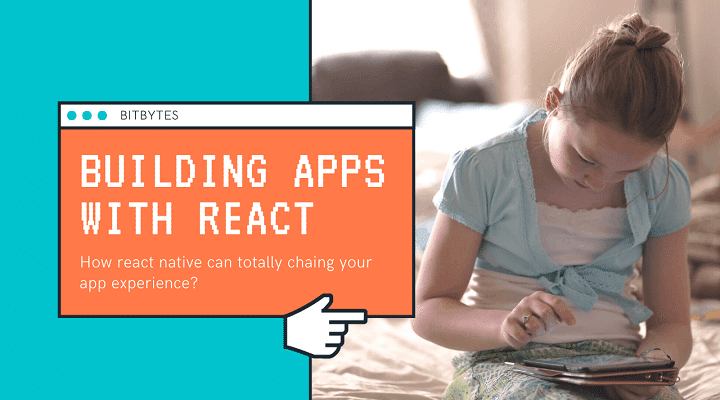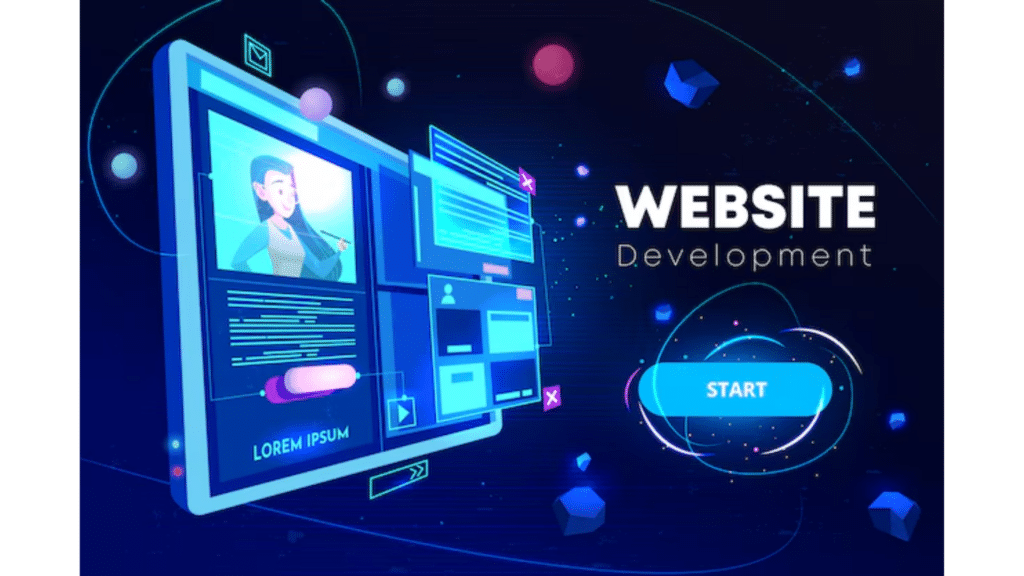React Native is a framework developed by Facebook that allows you to create multiplatform apps in JavaScript in an accelerated, simple, and multiplatform way. On average, this framework reduces development time by 30% because iOS and Android apps share the majority of the code. React Native is, therefore, the best way to quickly launch the first viable version of an app on the App Store and Google Play.
But beyond the first version of the app, many large companies have been seduced by React Native technology. After testing it, many companies have gone as far as entire recording parts of their app using it. In this article, we will see examples of companies that have chosen React Native for specific needs and which testify to the impact of the adoption of this technology on their technical and operational performance.
Instagram: grab the attention of its users with React Native
Instagram a benchmark user engagement rate
In June 2018, Instagram reached 1 billion monthly active users, half of whom are busy daily. On average, a French person opens their Instagram application ten times a day, and the engagement rate on Instagram is 60 times higher than that of Facebook: Instagram has become a benchmark in interactivity and the user experience.
It is by continually innovating that Instagram captures the attention of its users
One of the reasons for this success is Instagram’s ability to develop functionality continuously and quickly. For this, Instagram considers that code sharing between iOS and Android applications is a crucial factor in accelerating the development of new features. React Native, which allows the same code base to be used for both applications, therefore appeared as a boon for Instagram, which decided to take an interest in it in early 2016, less than a year after the launch of the framework. Instagram technical teams first tested this framework on Push Notifications; then, the test is conclusive; they decided to extend it to several other functionalities.
It’s React Native which allows Instagram to go faster by sharing the same code for all platforms
By using React Native on other features, the developers of Instagram have also realized another advantage of this technology, such as the native look & feel. For example, on the Post Promote feature, which allows users to manage the advertising of their post, the developers of Instagram had used a WebView. A WebView will enable you to display a web page in a native application. Instagram had used WebView because it makes it easier to iterate than native code.
However, the WebView does not allow the user to display a UI similar to that of native apps. Using React Native on this feature, the developer teams were surprised to see how users couldn’t tell the difference with a native app.
Tested and then gradually implemented on several features, RN was, therefore, a great success at Instagram.
“ React Native has enabled our Product teams to develop functionality on our apps faster, both on Android and iOS.” – Medium
As proof, here are the percentages of lines of code that are shared between the two platforms for the functionalities on which React Native has been chosen:
- Post promotion: 99%
- SMS security captcha: 97%
- Comment moderation: 85%
- Lead-generating advertising interface: 87%
- Push Notifications: 92%

Why Choose react-native to build your application? 5 non-resistible reasons
React Native is a mobile application development framework based on the React web library and uses the Javascript programming language. Its particularity is that it allows you to develop and deploy your application simultaneously for the iOS and Android platforms with a single code base.
Since its creation in 2015, this framework has gained immense notoriety and has become the most successful project of the year on Github . 4 years later, the success of React Native continues. What are the advantages of React Native that explains its success?
- Development Speed – the first advantage of building apps with React Native
- The homogeneity of iOS and Android applications
- The ease of recruiting your team
- A native user experience
- Sustainable technology thanks to its community
1. Development Speed – the first advantage of building apps with React Native
A unique Javascript code base for all platforms
One of the primary advantages of React Native is the speed of development and maintenance of your applications.
Thanks to a Javascript engine that uses native instances, engineers develop only one code base for the iOS and Android platforms. This allows them to build and deploy applications in all stores simultaneously.
Developing your React Native applications is all the more efficient if the syntax of the React component library is very concise. It allows you to code screens very quickly compared to other solutions like Flutter, the cross-platform framework developed by Google, which is more verbose.
More efficient code recompilation
Also, developers save development time when compiling their code. Thanks to technologies like hot-reloading, each time the developer publishes his code, the result is displayed live on his simulator. Conversely, with purely natural solutions, it is necessary to rebuild the application, which takes between 10 seconds and several tens of minutes.
React Native saves development time by 30% compared to native technologies. And this has a double impact: improving the time-to-market of your app while reducing development costs.
2. The homogeneity of iOS and Android applications
A single code base makes it possible to have two similar mobile applications. The developer codes a unique feature for the two stores (Android and iOS). This avoids version conflicts between the two apps if, for example, your company has two separate Android and iOS engineering teams, and the iOS team is faster than the Android team. Also, the rendering of your application is as aesthetic and efficient as on a native app.
3. The ease of recruiting your team
React Native is based on the React library and the JavaScript programming language, which is originally a web language. According to Stack overflow, almost 70% of developers know JavaScript, which allows you to build and train your team quickly. Add to this idea, the fact that React Native is a framework whose entry cost is much lower: a few months may be enough to master it against years for other structures.
Also, your developers will no longer be partitioned to developments on a target platform, becoming cross-platform Web and mobile developers, which is motivating to join a team!
4. A native user experience
Other frameworks are based on the Web, but unlike them, React Native uses native components. For example, the React Native framework loader is the loader found on iOS and Android, while for the other frameworks, we have a loader that comes from a web-view. Existing methods of writing mobile applications generally use combinations of JavaScript, CSS, and HTML that render web views.
Conversely, React Native allows you to write mobile apps as powerful as a native application without having to master the languages iOS (Swift or Objective-C) and Android (Java or Kotlin). React Native offers predefined essential components that combine to form custom components.
Result: your users do not see the difference between your React Native application and a native application.
5. Sustainable technology thanks to its community
Four years after its launch, React Native is one of the most popular projects on Github with more than 2000 contributors and a very active community. The impact of the growth of a community around an open-source project is fundamental to its success, and it is the contributors who keep it alive by offering new components and thus making life easier for all users!
The fact that React Native was developed on the initiative of Facebook (which uses it on some of its applications) has played on its success, which gives confidence in the future of this technology.
Today, Facebook, Instagram, Uber Eats are applications that use React Native.
How building apps with react going to help you?
Your mobile application no longer suits your needs and those of your users, and you want to set up a development project to make it more efficient and improve the user experience? Are you hesitating between a total or partial overhaul? Or the technology to use? Between native application, multiplatform application, and progressive web-app (PWA), it is sometimes difficult to navigate. In this article, we give you the keys to evolve your mobile app and accelerate its development.
Context of the evolution of your mobile application

Creation
Starting an application is a crucial moment in its life cycle. You will have to define the architecture of your project that you will probably keep throughout the life of your application since this is the moment when you will set the architecture of your project and the technologies that you will use to code your application. These first choices are, therefore, crucial, but it is very often difficult, if not impossible, to anticipate what your app will be in several months and the needs that you will have.
Total redesign of your application
Unfortunately, despite all the seriousness and the implication that we can put in the choice of technologies from the application, there often comes a time when a company must evolve the technology of its app for different business reasons:
- The design of the app is aging and no longer corresponds to the brand image;
- The company is developing a new activity, and the application no longer corresponds to business needs;
- Users want critical new features that are not supported by current technology, etc.
For example, Snapchat recently communicated in early 2019 about the complete overhaul of its Android application. The reason? Android users find it challenging to use the app because it turns out to be very slow, and the quality of the photos is lower than the quality of their camera. The consequence is that Snapchat has had much less retention on Android than on iOS and now wants to solve this problem with its redesign.
When a company embarks on a complete overhaul, it hopes for the rapid availability of a new, more functional, and scalable application. But the total redesign of an application is a large project which often turns out to be more complicated than what we had hoped for and involves weeks or even months of development. Meanwhile, users will not have access to new features, which can affect the customer experience, especially in a market where features evolve quickly.
Progressive evolution of your application
Developing your application gradually is often a good compromise for a complete overhaul. It is indeed a more pragmatic choice, which allows you to redesign while continuing to develop your mobile application and offer users new features. It, therefore, provides 3 main advantages:
- Reduce time-to-market to launch new functionalities starting from an existing base;
- Control costs by having a single application to maintain;
- Minimize the risk of having dissatisfied users due to sudden changes.
What are the solutions to gradually evolve your mobile application?

Launch a Progressive Web App (PWA) in addition to your app
The Progressive Web App is a website developed to adapt to mobile browsers. PWA has the advantages of being developed with web tools, mainly HTML5 / CSS and Javascript while adapting to the portable format.
A PWA will not replace your classic app since it will not be on stores and will only be accessible via a web browser. On the other hand, it has the advantage of being able to acquire quickly since it does not require a download on the stores, which involves memory not always available on users’ smartphones.
If your business needs are to promptly test new features and immediately reach a certain number of users, then PWA can be an attractive pragmatic choice.
For developers accustomed to these programming languages, this can be an undeniable advantage of comfort and speed, and it also allows lower development costs.
Recent technological advances for the PWA will enable it to be added to the home screen as an app (however few users know it), to be used offline to perform certain functions and to call specific features of the telephone (GPS, Notifications, etc.).
With these recent advances, the PWA has the wind in its sails, in particular, because it also has the advantage of not having to go through conventional stores (Google Play Store, App Store, etc.).
On the other hand, if you do not want something simple and instead want to evolve your application to allow it to go further and add complex functionality, the PWA may not be the best option because you will probably be technically limited. Also, it is not an application itself since it is not on the blinds, which can be confusing for your users if they are used to seeing your app on the screens.
The Native application for a highly complex project
Unlike the PWA, the native application will allow you to do absolutely everything possible. A native application means that it is coded in the clean technologies of smartphone manufacturers.
The “apps” can be directly downloaded from the stores owned by the leading manufacturers: Apple, Google (Android), and Windows. On an iPhone, which works with iOS, the native language will be obj-c or Swift. On a Samsung, Pixel, or Huawei, which all work with Android, the word will be Java or Kotlin.
You will surely see the complexity, which is that if you want your application to be on the App Store and Google Play, you will have to code two different applications with two different languages. You will not be limited in your possibilities with the application, but it will, however, be much more expensive in terms of development.
If your app requires a user experience that is maximized by very sophisticated features, including the use of native phone functionality, then the native app makes sense. For example, for an application like Pokemon GO that uses users’ cameras to create augmented reality, a native application is required.
Upgrade to a “cross-platform” app to be faster while maintaining a high level of quality
The “cross-platform” application is exciting if you need to quickly test your product while having a robust user experience (UX). The principle of the cross-platform application is to use the same language to code a codebase common to applications intended for different stores.
This code sharing between iOS and Android apps is a real advantage of the cross-platform application because it considerably reduces the cost of development and the time-to-market.
Besides, the cross-platform application allows you to maintain a natural look & feel and therefore maintain an excellent level of user experience. If the cross-platform app will probably not be as fast as a native app, it will, however, be able to access all the native features of the phone. The cross-platform application is, therefore, a very pragmatic choice for the development of a mobile app.
Conclusion
React Native, therefore, allows us to divide development times. The framework thus makes it possible to reduce the time-to-market and to have a product available more quickly on the market in France. Finally, React Native allows you to keep a look & feel similar to the native and to keep a field of possibilities utterly open in terms of functionality.






